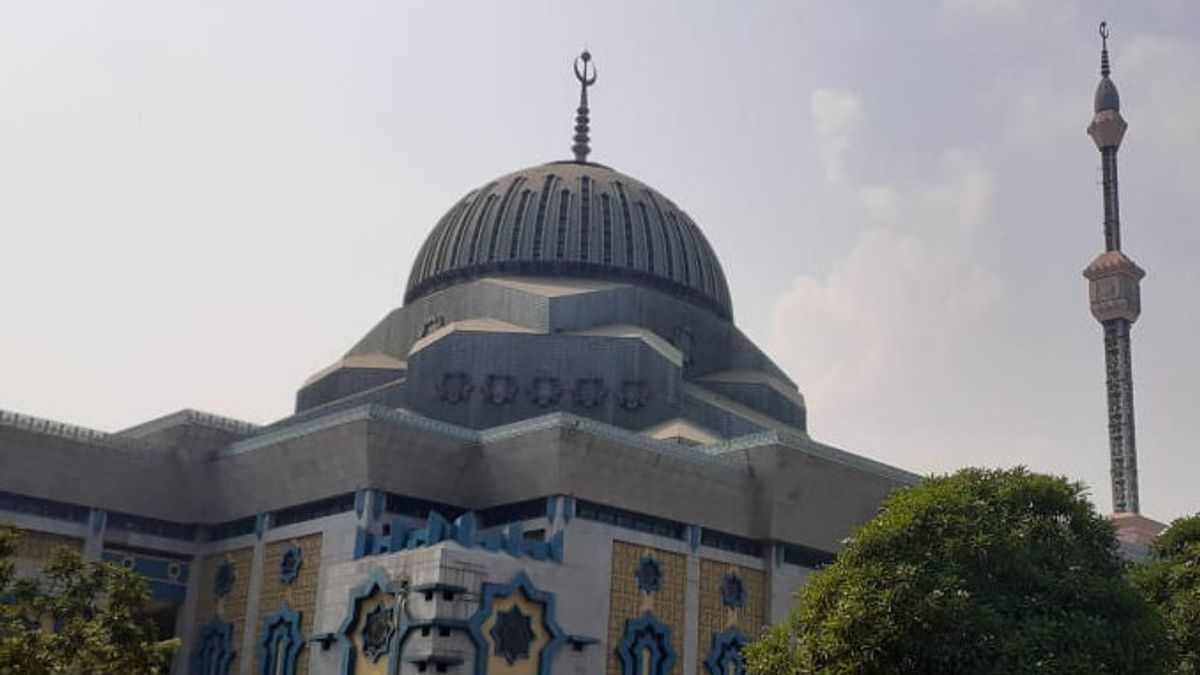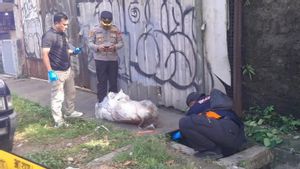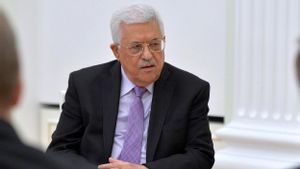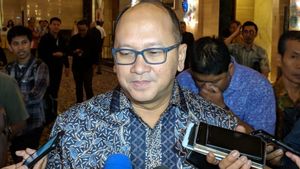JAKARTA - Many people have heard of the dark history of the area of the Jakarta Islamic Center (JIC) Mosque, which was once the largest prostitution location in Southeast Asia called Kramat Tunggak. We will discuss in more depth the journey of transforming the land, which was once a cage to satisfy the desire to become a holy place for Muslims in the Koja area, North Jakarta.
The VOI team spoke with one of the employees, namely the Head of the Management Study and Education Division of the JIC Management Agency, Paimun. He heard firsthand the story of the origin of JIC from the head of the first period Islamic Center, Djailani. Paimun said, Djailani understood very well about this incident considering that he had served as Deputy Governor of DKI in the field of Community Welfare in 1997.
It all started with former DKI Governor Ali Sadikin's anxiety over the existence of prostitution in Jakarta, especially city centers such as Senen and Salemba. Until finally Ali traveled to Bangkok, Thailand around 1970. He was surprised, there was not a single commercial sex worker in sight. In fact, all prostitution activities there gather in one location.
"From there, he (Ali Sadikin) had an idea. So that the local government can control prostitution in Jakarta, the way is to make a localization in Kramat Tunggak and collect retribution from the manager," said Paimun during a conversation with VOI, Saturday, November 16.
Kramat Tunggak used to be empty land. There are only trees and swamps. This location is an option because it is on the edge of the capital city. At the beginning of the lokalisasi, it was recorded that 250 prostitutes were gathered, along with 58 pimps. However, it turned out that it grew to 2000 people.
"It is also recorded that they live in the brothel, not yet the prostitutes (Tuna Susila) who live there, but the cats and dogs work there. It is called the biggest prostitution place in Southeast Asia," said Paimun.
Economically, the circulation of money there is fantastic, reaching billions per year. However, it cannot be denied that this prostitution location has many problems.
The period of the governor changed, causing unrest in the surrounding community. There, the crime rate is high, murder cases occur almost every day, until the HIV-AIDS virus spreads. Many mothers feel worried, afraid that if their husbands try to 'snack' there so that it disturbs the integrity of the family.
Not only that, it turns out that the manager of Kramat Tunggak also manipulated the shape of the building in order to avoid higher taxes. There is a building that looks only one floor from the outside, but apparently they made a new floor on the roof.
Until Sutiyoso became Governor of DKI in 1997, there was a realization that it turned out that the prostitution localization in Kramat Tunggak was a mistake. Moreover, a number of people and scholars have continued to demonstrate for 30 years because they reject the practice of prostitution there.
"In 1998, at the time of the monetary crisis, visitors slightly decreased because they thought about financial conditions so that income and fees decreased. Mr. Sutiyoso took this moment, then issued a Governor's Decree which stated that he would completely close it on December 31, 1999," he explained.

While waiting for the closing time, sex workers and pimps receive assistance from the DKI Social Service. They are given training in skills, ranging from culinary, fashion, to beauty.
"A total of 1615 people were trained for a year. After that they had certificates and were sent back to their respective villages, mostly in the Pantura area," said Paimun.
Some prostitutes do not want to be sent home. They moved to Rawa Malang, Cilincing, North Jakarta. The prostitution building model was made similar to Kramat Tunggak. Now, there is no successor to prostitution Kramat Tunggak. Even if there were people who lived there, they would no longer work as prostitutes because they were old.
The former Kramat Tunggak prostitution land was a polemic. Sutiyoso is confused about what to do with the land. There are thoughts to make rent flats. However, there are also offers to build malls and hotels.
"Until finally Pak Sutiyoso was called to do umrah. Then he was inspired to build a mosque. He asked for consultation with Azzumardi Azra who was then Chancellor of UIN Syarif Hidayatullah. It turned out that the mosque construction plan was fully supported," he said.
The design of the mosque began in 2001 and was inaugurated in March 2003. Sutiyoso made JIC the largest mosque complex in Indonesia, with an area of 109,435 m2. This mosque can accommodate worshipers of up to 20,680 people.
Inside the mosque complex there are office buildings, libraries, halls and several other supporting facilities.
The English, Chinese, Japanese, Arabic, and French versions are automatically generated by the AI. So there may still be inaccuracies in translating, please always see Indonesian as our main language. (system supported by DigitalSiber.id)










